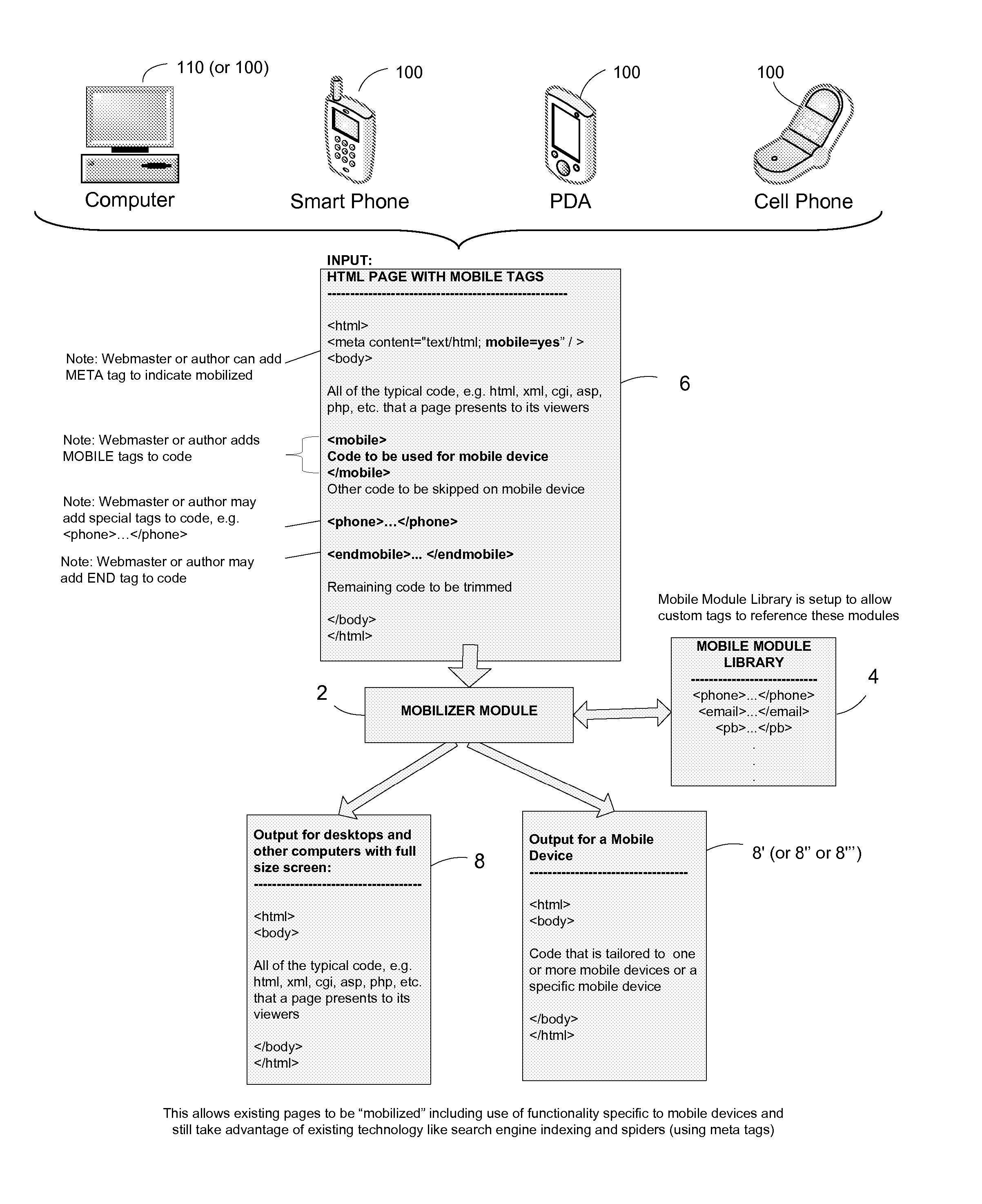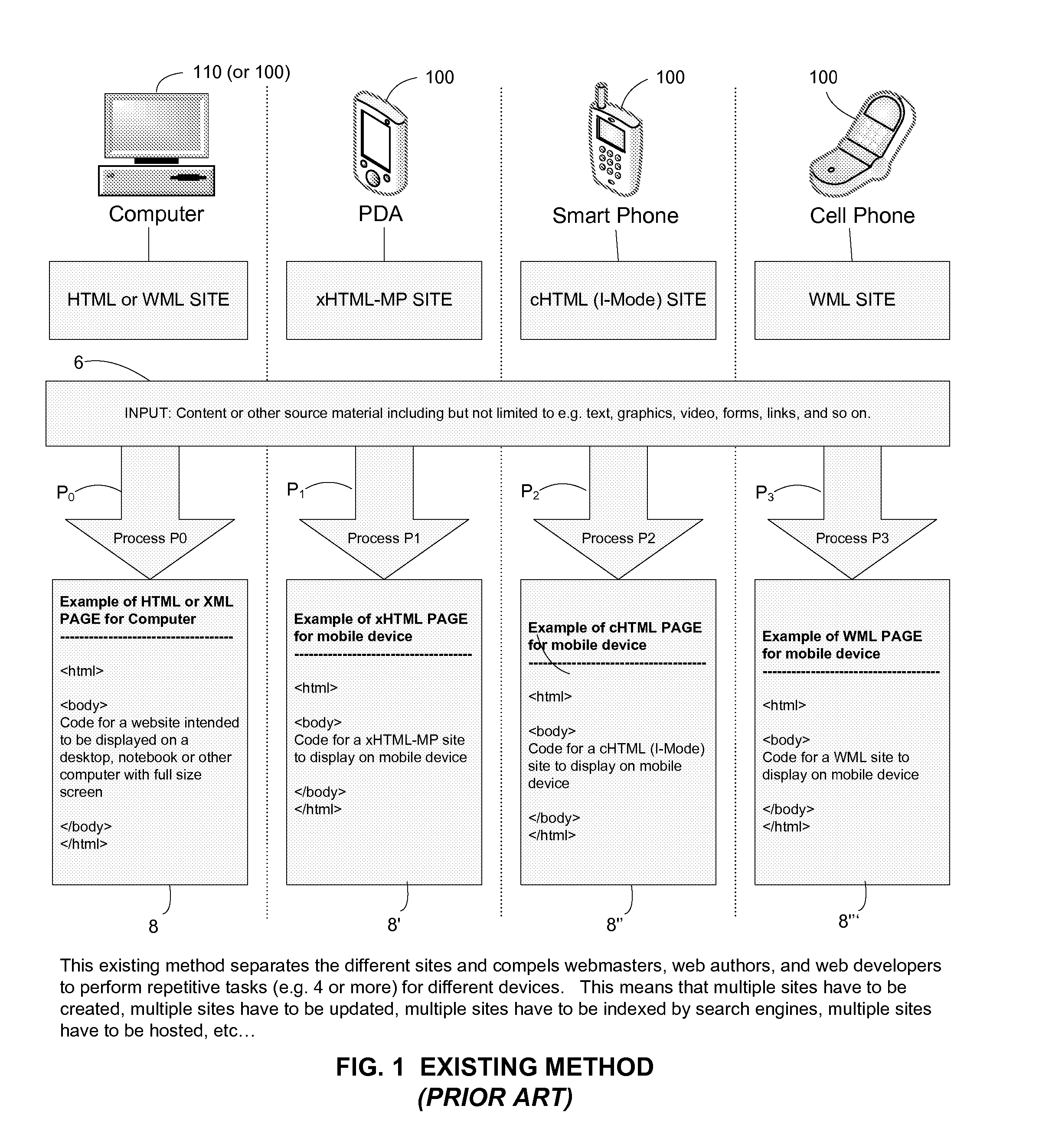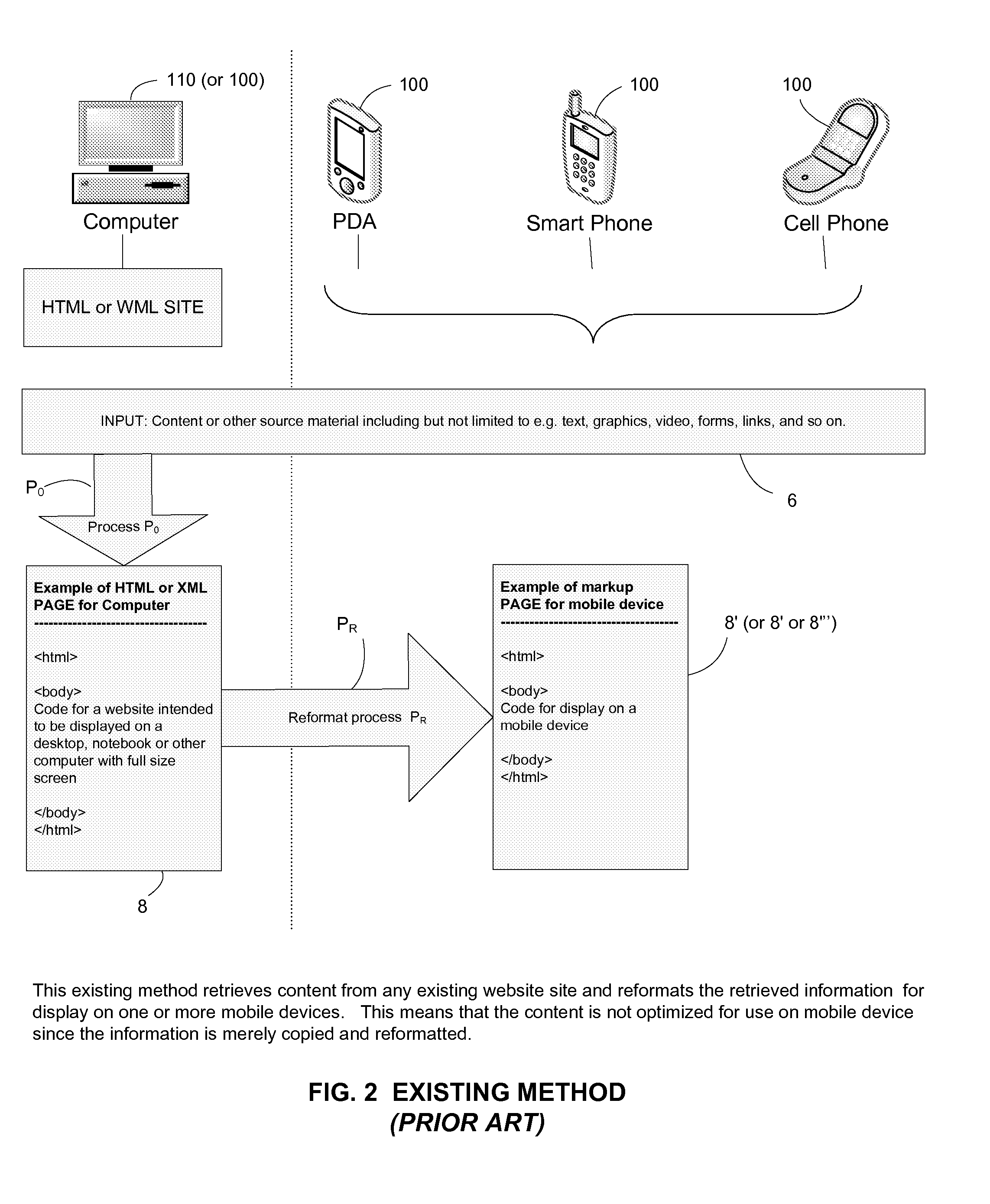Mobilizing Webpages by Selecting, Arranging, Adapting, Substituting and/or Supplementing Content for Mobile and/or other Electronic Devices; and Optimizing Content for Mobile and/or other Electronic Devices; and Enhancing Usability of Mobile Devices
a webpage and mobile technology, applied in the direction of electric digital data processing, instruments, computing, etc., can solve the problems of insufficient alleviation of dependency, inability to adapt the webpage to the mobile device, and inability to adequately alleviate dependency, so as to increase the incidence of crimes involving the impersonation of officers, and ensure the public's identity. the effect of accuracy
- Summary
- Abstract
- Description
- Claims
- Application Information
AI Technical Summary
Benefits of technology
Problems solved by technology
Method used
Image
Examples
Embodiment Construction
[0238] With reference to FIGS. 1 through 4, 9A, 9B, 10, 11A, 11B, 12A through 12C, 13A through 13E, and 14A through 14E, a mobile electronic device is depicted by numeral 100 and any other electronic device is depicted by numeral 110. The mobile device 100 may include any electronic device including a mobile phone, a PDA, a hybrid PDA and phone, a mobile computer such as a laptop, notebook, tablet, and so on, as the term “device” is defined herein. The other electronic device 110 may be a desktop, workstation, mainframe, server, control unit for a building automation system, control unit for a telecommunication system, or other immobile electronic device.
[0239] With reference to FIGS. 1 through 10, the mobilizer module is denoted by numeral 2, the mobile module library by numeral 4, the input by number 6, and output denotes by numeral 8 (or 8′,8″,8′″). The mobile device 100 has an input device 40 (or 40a, 40b, 40c) and a display 30 that is a miniature size screen such as a mobile p...
PUM
 Login to View More
Login to View More Abstract
Description
Claims
Application Information
 Login to View More
Login to View More - R&D
- Intellectual Property
- Life Sciences
- Materials
- Tech Scout
- Unparalleled Data Quality
- Higher Quality Content
- 60% Fewer Hallucinations
Browse by: Latest US Patents, China's latest patents, Technical Efficacy Thesaurus, Application Domain, Technology Topic, Popular Technical Reports.
© 2025 PatSnap. All rights reserved.Legal|Privacy policy|Modern Slavery Act Transparency Statement|Sitemap|About US| Contact US: help@patsnap.com



